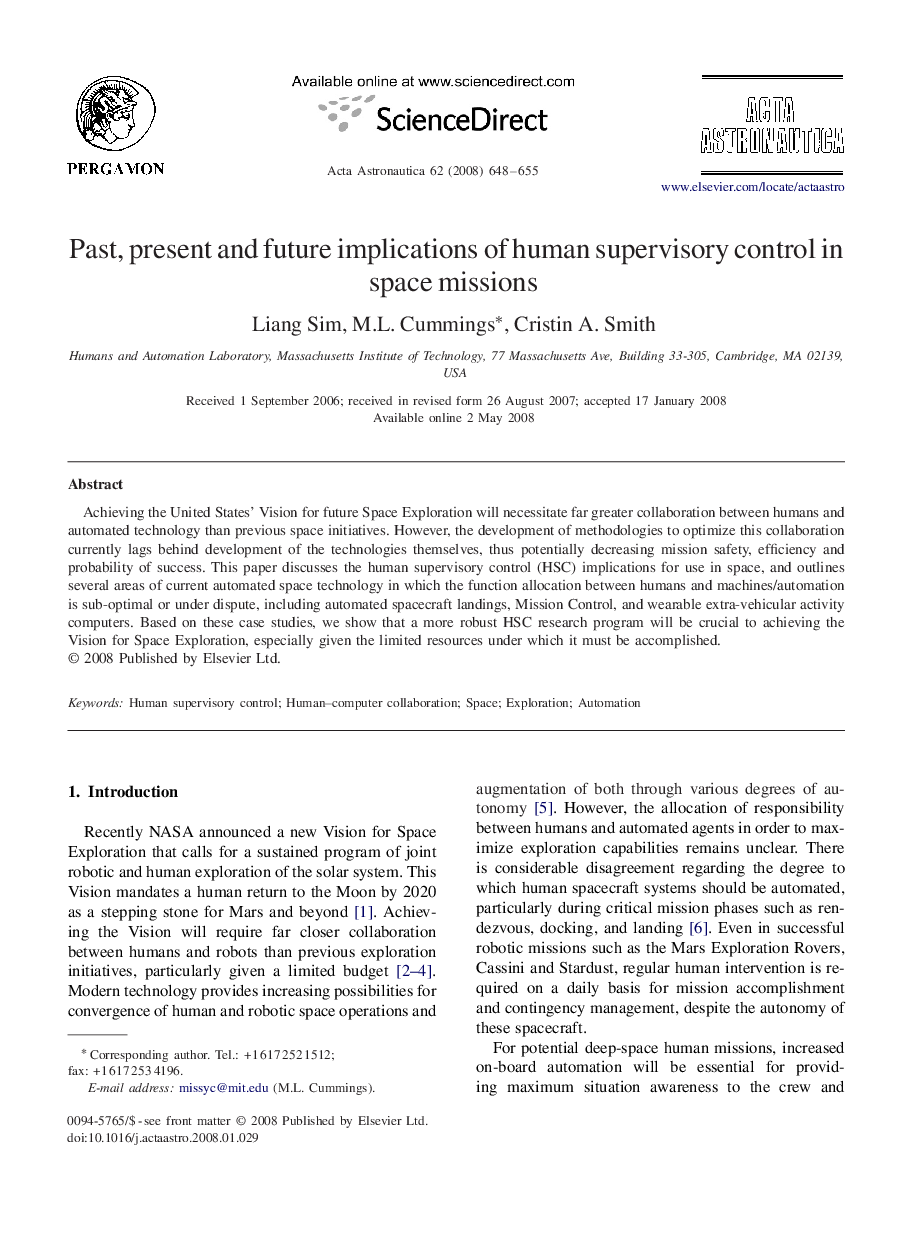| Article ID | Journal | Published Year | Pages | File Type |
|---|---|---|---|---|
| 1716888 | Acta Astronautica | 2008 | 8 Pages |
Abstract
Achieving the United States' Vision for future Space Exploration will necessitate far greater collaboration between humans and automated technology than previous space initiatives. However, the development of methodologies to optimize this collaboration currently lags behind development of the technologies themselves, thus potentially decreasing mission safety, efficiency and probability of success. This paper discusses the human supervisory control (HSC) implications for use in space, and outlines several areas of current automated space technology in which the function allocation between humans and machines/automation is sub-optimal or under dispute, including automated spacecraft landings, Mission Control, and wearable extra-vehicular activity computers. Based on these case studies, we show that a more robust HSC research program will be crucial to achieving the Vision for Space Exploration, especially given the limited resources under which it must be accomplished.
Related Topics
Physical Sciences and Engineering
Engineering
Aerospace Engineering
Authors
Liang Sim, M.L. Cummings, Cristin A. Smith,
